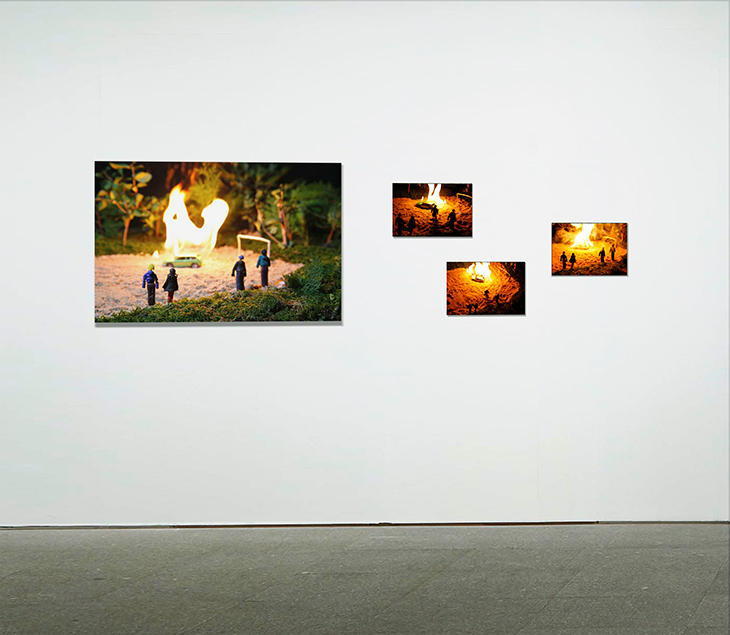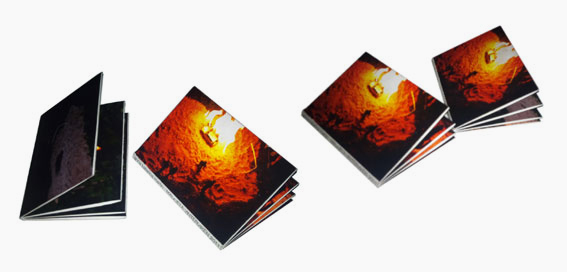[ES] Arte urbano o arte callejero (no necesariamente o graffiti) manifiesta su pasión por la ciudad, se relaciona con esta, y la vida de los barrios donde los artistas viven o intercambian experiencias. El arte realizado en espacio exteriores, a nivel urbano, comparte el sentido de protesta y la necesidad de reivindicación social. Se caracteriza por consumarse en el espacio público, a menudo las obras son vistos como actos de vandalismo y destrucción de la propiedad. Algunas veces las diversas formas constituyen en efecto, actos de vandalismo.
Destruir para crear
La destrucción para crear arte es una idea bastante compleja ya que se puede entender como elementos opuestos. El arte crea, mientras que la destrucción elimina. La destrucción es finalización de algo. O puede ser un punto de partida. Para muchos está técnica no es válida ya que al destruir una muro, un vehículo no se crea una obra, se elimina o suprime. Se dice que cuando se rompe algo significa que este algo deja de hacer su función, ya no sirve. De hecho, se puede considerar dos conceptos opuestos. Sin embargo, si se acepta todo proceso como acto artístico esta técnica es válida, ya que se crea un mensaje, o un sentimiento interior especial cuando miras obras creadas a base de destruir.
Desde mi punto de vista todo arte es la destrucción de algo para crear una obra, es decir, lo que destruyeses el soporte sobre el que se crea. El soporte deja de serlo para ser una obra de arte. Esta técnica está presente en todas las técnicas ya que cuando trabajas sobre un soporte, con cualquier técnica se destruye la esencia de este y se crea otra esencia con otro mensaje, justo lo que ocurre en Vinterviken, una reconstrucción de mi primera experiencia escultórica.
Las obras quemadas y la técnica de destrucción es agresiva, sentimental, y bastante compleja y peligrosa ya que al más mínimo fallo puede explotar o destruyendo todo por medio creando la obra. Requiere una preparación especial desde materiales a destruir, romper, quemar, etc. hasta la limpieza posterior. Utilizas los objetos existentes para crear una obra de arte pero no controlas por completo el resultado. Este no detallismo le da un toque sentimental y cumple perfectamente con el mensaje que se pretende dar.
Una reflexión importante
Por todas las consideraciones (y desconsideraciones) que el arte callejero y el arte urbano, involucran, una pregunta fundamental sobre su carácter e idoneidad es la legalidad, no para terminar, sino comenzar por algún lado a darle civismo al debate. En una sociedad que aspira a comportarse bajo principios de armonía, respeto y coexistencia de diversos sectores, grupos y componentes, la aceptación o no de estas formas de expresión, y su práctica, dependen del nivel de permisividad que la sociedad confiere al individuo, de otra forma el artista debe asumir el carácter subversivo de su acción y atenerse a las consecuencias.
|
[ENG] Urban art or street art (not necessarily graffiti) expresses passion for the city, is related to it, and the life in the neighborhoods where the artists live or exchange experiences. The art made in outdoor spaces, at the urban level, shares with the sense of protest and the need for social demand. It´s defined by being consumed in the public space, the works are often seen as acts of vandalism and destruction of property. Sometimes the various forms constitute, in effect, acts of vandalism.
Destroy to create
Destruction to create art is a rather complex idea since it can be understood as opposing elements. Art creates, while destruction eliminates. Destruction is the end of something. Or it can be a starting point. For many pearsons, this technique is not valid because when destroying a wall, a vehicle, a work is not created, but eliminated or suppressed. It is said that when something is broken it means that this something stops doing its function, it does not work anymore. In fact, two opposing concepts can be considered. However, if you accept any process as an artistic act, this technique is valid, as it creates a message, or a special inner feeling when you see works created by destroying.
From my point of view, all art is the destruction of something to create a work, that is, what you destroy is the support on which it is created. The support stops being it to be a work of art. This technique is present in all techniques because when you work on a support, with any technique the essence of this is destroyed and another essence is created with another message, which is exactly what happens in Vinterviken, a reconstruction of my first sculptural experience.
The burning works and the destruction technique is aggressive, sentimental, and quite complex and dangerous since the slightest fault can explode or destroy everything by creating the work. It requires a special preparation from materials to destroy, break, burn, etc. as the subsequent cleaning. You use the existing objects to create a work of art but you do not completely control the result. This non-detail gives a sentimental touch and perfectly fulfills the message that is intended to give.
An important reflection
All the considerations (and inconsiderations) that starting with graffiti, street art and urban art, involve, perhaps the best way to ask the question about their character and suitability is to invoke legality, not to finish, but to start somewhere to give civility to the debate. In a society that aspires to behave under the principles of harmony, respect and coexistence of diverse sectors, groups and components, the acceptance or not of these forms of expression, and their practice, depend on the level of permissiveness that society confers on the individual, in another way, the artist must assume the subversive character of the action and put up with with the consequences. |



